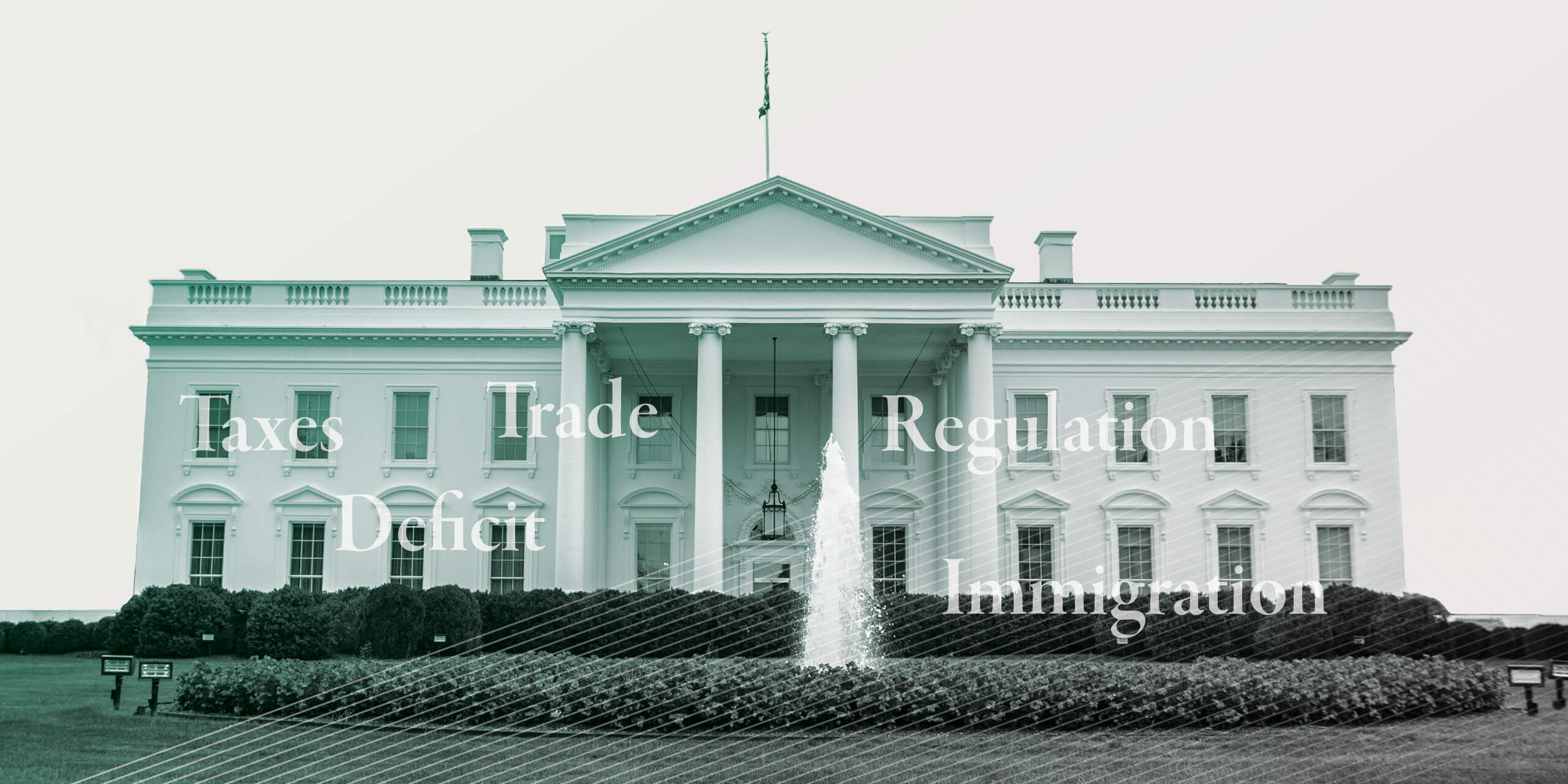
Five Economic Policy Differences in This Presidential Election
Election cycles are always filled with unpredictability, but today’s political backdrop is even more uncertain than usual. The post-pandemic period has seen major changes across fiscal, monetary and geopolitical policy frameworks, to say nothing of the rapidly evolving election dynamics. Even as we write this in late July, many critical components of the election remain unsettled. That is why now more than ever we believe a focus on policy over politics will serve investors well. Here are five policy areas in which we see a stark difference that will matter for markets in the coming years.
1. Taxes
With nearly $4 trillion of tax and spending provisions set to expire, 2025 could be the most important year for tax policy since the creation of the income tax in 1913. These expiring provisions include lower individual rates, a 20% exemption for pass-through entities and higher estate and gift tax exemptions, as well as enhanced Affordable Care Act subsidies to purchase health insurance. The Democratic candidate will likely focus on extending the ACA subsidies and tax cuts for lower-income individuals, while pushing to offset those costs through higher taxes on corporations and high-income individuals. The Republican candidate will seek to extend a wider array of the expiring tax cuts and offset costs through spending cuts, tariffs and scaled-back ACA and green energy subsidies.
2. Deficit
The U.S. budget deficit will be around $2 trillion for fiscal 2024, or roughly 7% of GDP – an unusually high percentage for an economy not in recession. Because interest rates increased in 2022 and 2023, the net interest cost on the deficit is at its highest level in over 25 years. The U.S. Treasury has the tools to mitigate some of the deficit’s effects, but the net interest cost could infringe on other government spending priorities. The debt ceiling expires at the beginning of the next presidential term and Congress will need to raise the debt ceiling at some point in 2025. Both presidential candidates could be expected to raise taxes or tariffs to finance an extension of the existing tax code.
3. Trade
After decades of globalization, policymakers of both parties now seek to deglobalize, providing incentives to bolster domestic manufacturing and build out more resilient supply chains. We expect this trend to continue regardless of which party takes the White House. While the current administration has used targeted tariffs to accomplish policy goals (e.g., Mexican steel and aluminum, Chinese EVs), a Republican presidency will likely utilize tariffs more broadly to upend supply chains, forcing companies to move faster than they might otherwise. This could lead to supply chain migration away from China and into other countries including India, Mexico, Vietnam, Canada and the U.S.
4. Regulation
The Republican economic plan centers around deregulation across several critical industries, with a focus on the Financial, Energy and Technology sectors. We’d expect to see an emphasis on streamlining energy infrastructure projects, expanding liquefied natural gas exports and increasing fossil fuel usage for domestic electricity. We’d also expect a focus on fewer bank capital buffer restrictions and a broader deregulatory approach toward artificial intelligence. Should the Democratic ticket emerge victorious, we expect a focus on implementing the Inflation Reduction Act and cleaner energy projects, as well as additional steps toward solidifying antitrust regulation. We also expect a stricter approach to AI regulation, as evidenced by last October’s AI Executive Order.
5. Immigration
Along with the economy, immigration is a key issue for voters this election. Should the Democratic candidate win the election, we would expect many of the current border policies to continue in place. Under a Republican administration, we would expect an immediate focus on significantly reducing migration across the southern border. This will have important macroeconomic implications since the Federal Reserve will be focused on the labor supply, and non-native born workers have been filling jobs and supporting the U.S. economy.
The information offered is provided to you for informational purposes only. Robert W. Baird & Co. Incorporated is not a legal or tax services provider and you are strongly encouraged to seek the advice of the appropriate professional advisors before taking any action. The information reflected on this page are Baird expert opinions today and are subject to change. The information provided here has not taken into consideration the investment goals or needs of any specific investor and investors should not make any investment decisions based solely on this information. Past performance is not a guarantee of future results. All investments have some level of risk, and investors have different time horizons, goals and risk tolerances, so speak to your Baird Financial Advisor before taking action.



